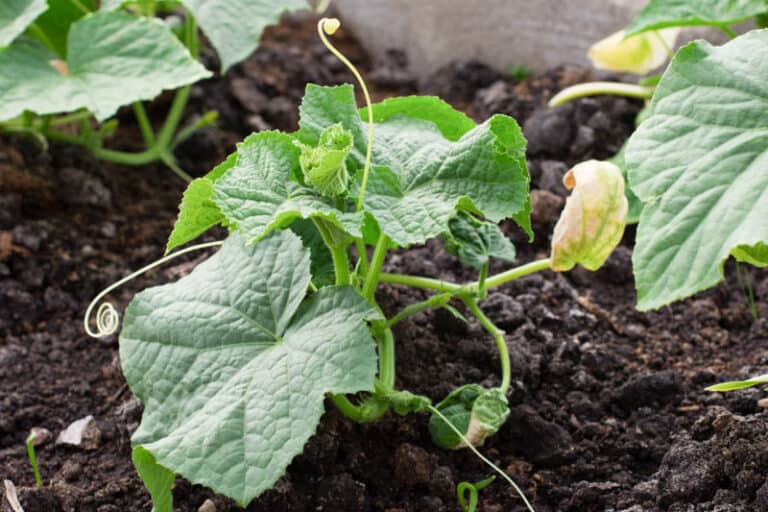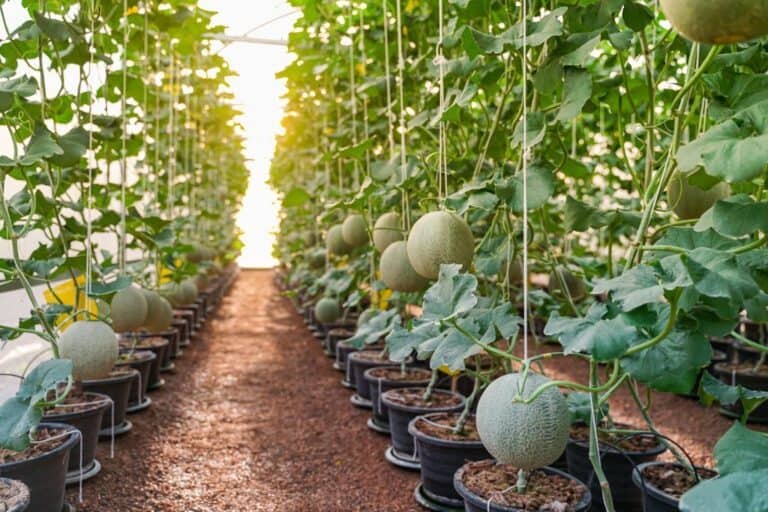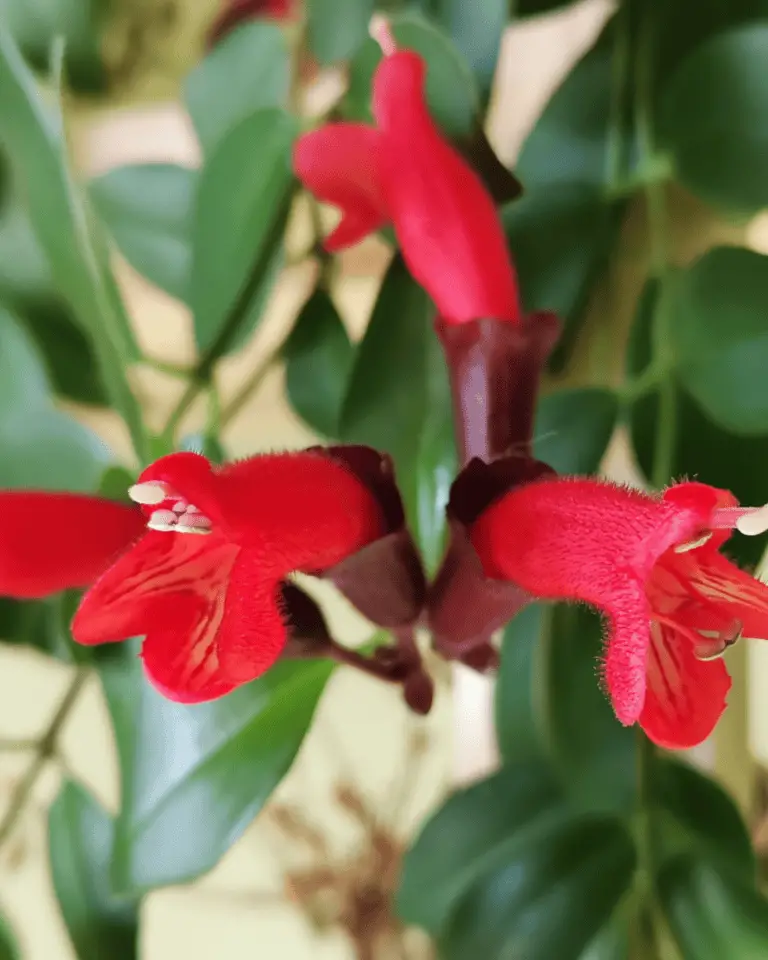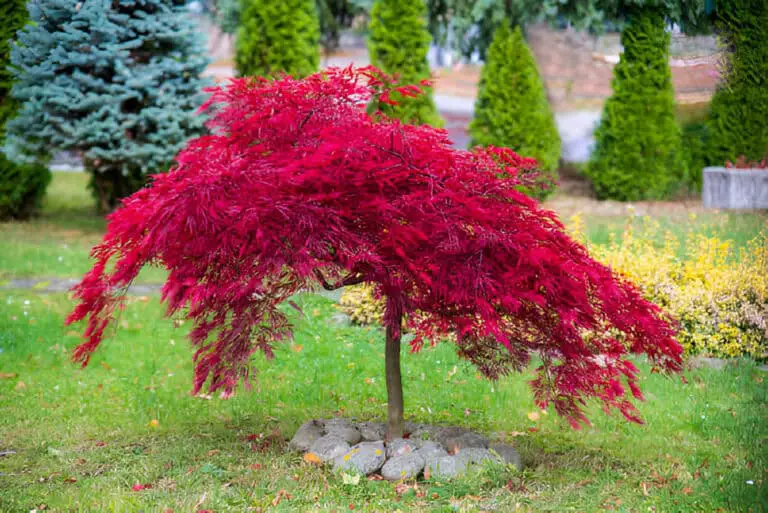Acer Palmatum (Japanese Maple): Plant Care and Growing Guide
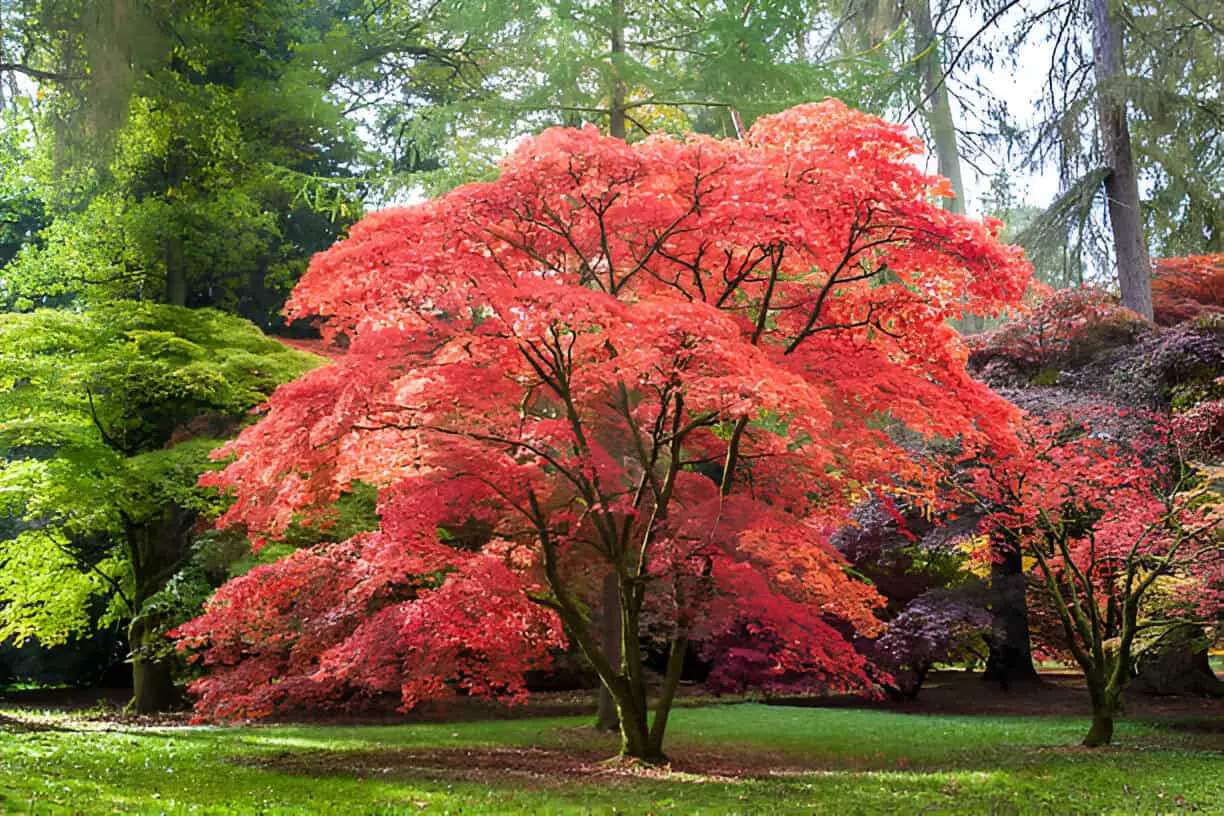
The Japanese Maple, otherwise known as the Acer Palmatum or Smooth Japanese Maple, Amoenum Goup, Palmatum Group, Matsumurae Group, Dissectum Group, Linearilobum Group (Acer palmatum), is a rather well-known shrub plant among gardening enthusiasts around the world.
Best known for its low maintenance and moderate growth, this shrub will likely liven up your house (or garden) with its light green-colored leaves. But only if you learn how to take proper care of it for it to thrive.
This is why all the topics you need to know to achieve this will be covered in this Japanese Maple Care Guide. Ready? Let’s go!
The Color Palette of Japanese Maples
The color palette of Japanese Maples is one of their most breathtaking features. Different cultivars offer shades from fiery red and deep burgundy to soft green and golden yellow. Some even showcase variegated leaves with striking two-tone patterns.
Throughout the year, their leaves transform. Spring often brings bright lime or reddish tips, which deepen to lush greens or rich purples by summer. In fall, these trees steal the show with dazzling oranges, scarlets, and golds.
| Season | Common Leaf Colors |
| Spring | Lime, Pink, Red |
| Summer | Green, Deep Purple |
| Fall | Orange, Scarlet, Gold |
Sunlight and soil play a big part in color vibrancy. Japanese Maples with some dappled sun usually show the most intense hues. Well-drained, slightly acidic soil also keeps their colors vivid, ensuring your tree remains a stunning focal point all year long.
Scientific / Botanical Aspects
In botanical terms, the Japanese Maple belongs to the Sapindaceae family, the genus Acer and the species Palmatum, hence its scientific (or botanical) name Acer Palmatum (AY-ser pal-MA-tum).
Other common Sapindaceae species include Red Horse Chestnut ‘Briotii’, Acer Platanoides ‘Crimson King’, Acer Rubrum ‘Frank Jr.’ Plant Patent #16769, Acer Palmatum ‘Osakazuki’, Aesculus Parviflora, Fernleaf Full-Moon Maple, Paperbark Maple and Acer palmatum ‘Seiryû’.
As with other Acer’s, the Japanese Maple is a deciduous plant, which means it will shed its leaves annually once autumn comes.
Growing Region
The Japanese MapleChina, eastern Mongolia, Asia: Japan Korea, and southeastern Russia.
Knowing your plant’s native region is very useful, as it can give you tips on which environment is best for your Japanese Maple. If you keep it in mind, you can try to replicate these conditions at home, and you’ll likely end with a healthier plant.
With this in mind, the Acer Palmatum will be most used to the heat zones in the 2 – 8 region, as the plant hardiness level falls between 5b, 5a, 6b, 6a, 7b, 7a, 8b, 8a and the ideal climate zone is between 3, 4, 5, 6, 7, 8, 9, 10, 12, 14, 15, 16, 17, 18, 19, 20, 21, 22, 23, 24.
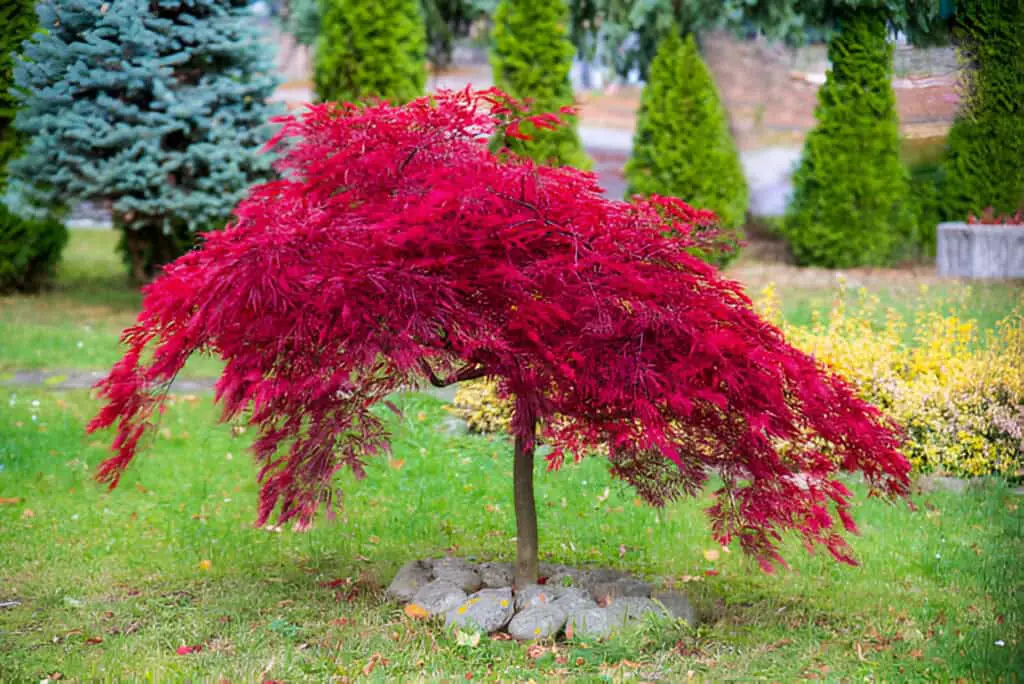
Growth and Size
Growth
In terms of size and growth, the Japanese Maple is a relatively moderate grower, which makes things somewhat easy for any plant enthusiast.
Size
But, how big does the Japanese Maple actually get? What should you expect in terms of size? Let’s dive right in…
The Acer Palmatum can grow up to 4′ – 25′ (120cm – 7.5m) in 4′ – 25′ (120cm – 7.5m) and 4′ – 25′ (120cm – 7.5m) in 4′ – 25′ (120cm – 7.5m).
Also, expect it to grow in a wonderful rounded shape, which is something worthwhile to remember when making your garden landscape plans.
Basic Guidelines for Acer Palmatum Japanese Maple
In order to take proper care of your Japanese Maple you’ll need to keep in mind the following guidelines:
- Water: The Japanese Maple wants regular watering to enhance fruit production but as a landscape plant, too much water will be a problem.
- Light: Keep your Acer Palmatum in an environment where it can receive partial to full sun on a daily basis.
- Soil: Make sure to keep the Japanese Maple in soil with moist but well-draining properties, so ideally, one that is made of clay, loam, chalk, and sand.
And that’s practically it! If you keep these three factors in check, your Japanese Maple will likely have all it needs for it to survive and even thrive.
Water
In terms of watering, the Japanese Maple is a fairly complicated plant to take care of.
This is mostly because it has a not so straightforward watering schedule and somewhat regular watering needs.
Specifically, most experts agree that the Acer Palmatum wants regular watering to enhance fruit production but as a landscape plant, too much water will be a problem.
Which is why it is considered a plant with relatively average needs in terms of water.
Watering
As a rule of thumb, you should remember to keep your Japanese Maple in soil with moist but well-draining characteristics, as these will guarantee the right conditions for your plant to grow and thrive.
When you consider this, this is why you should aim to choose soil that has good drainage, and moist properties to keep the right moisture levels at all times.
However, in our experience, the best solution to knowing the right amount of water for your Japanese Maple is with the ‘thumb’ technique. Basically, you insert your finger into the soil, and based if you feel the soil moist or dry, you determine if it needs any water, which is the most appropriate way to go about watering your leafy friend.
Soil Mix
As mentioned earlier, the Japanese Maple prefers to have soil with good drainage, and moist properties at all times, reason why you need to make the soil mix out of clay, loam, chalk, and sand.
This is why most experts agree that the Japanese Maple requires soil with high organic matter, which will give you the right conditions it needs.
In addition to this, expert gardeners recommend having preferably neutral to acid soil.
Light and Exposure
In terms of light & exposure, the Japanese Maple requires partial to full sun in order for it to thrive under the right conditions.
Most experts agree that this shrub will do well as long as you keep it in partial to full sun, and it will be able to grow properly.
Specifically, we recommend that you place your Acer Palmatum in dappled or moderate shade (under other plant’s canopy).
Season
Being a deciduous plant, the Japanese Maple will shed its leaves annually once autumn comes.
But, you can expect it to have its ‘prime-time’ during the fall.
Flowers
You can expect your Japanese Maple to flower around the spring months from April to June (spring).
The Japanese Maple produces some wonderful purple/lavender, gold/yellow and red/burgundy flowers around this time of year.
Foliage
The leaves from the Japanese Maple have a beautiful light green color during most of the year.
In particular, they have a simple arrangement with a opposite organization in its leaves.
You can expect the leaves from your Acer Palmatum to be around (3-6 inches) in size.
Attracts, Tolerance, and Resistance
The Japanese Maple is admired not just for its beauty but also for its impressive tolerance and resistance. This elegant tree is known to handle light grazing from rabbits without much trouble, so you won’t need to stress about frequent visits from curious wildlife.
In addition to rabbit resistance, Japanese Maples rarely attract pests or diseases when cared for properly. This makes them an easy choice for gardeners who prefer low-maintenance plants.
Here’s a quick look at what they handle well:
| Animal/Pest | Tolerance Level |
| Rabbits | High |
| Deer | Moderate |
| Common Garden Pests | Low Risk |
If you want a striking tree that stays strong through seasonal challenges, the Acer Palmatum is a smart pick. With the right conditions, it stands resilient and remains a highlight of your garden for years to come.
Garden
Now, let’s talk garden and how your Japanese Maple will look best in it.
Most Acer Palmatum owners agree that this shrub will look great in most asian/zen and contemporary gardens of all types.
Other owners consider that they complement well most gardens of gravel and rock garden, japanese garden, city and courtyard, informal and cottage, and in traditional garden styles.
In particular, the Japanese Maple’s best use for landscaping within your garden is as urban garden, firescaping/fire wise, specimen, or a woodland garden.
Acer Palmatum (Japanese Maple) Companion Plants
Pairing your Acer Palmatum with the right companions can create a stunning garden scene. Japanese Maples look beautiful alongside plants that highlight their graceful shape and vivid leaf color.
Some popular companions include shade-loving ferns, hostas, and azaleas. These plants thrive in similar light and soil conditions, adding layers of texture under your maple’s canopy.
| Companion Plant | Benefit |
| Ferns | Soft, feathery texture |
| Hostas | Bold foliage contrast |
| Azaleas | Seasonal color boost |
When planning your garden, place taller shrubs behind your maple and use low-growing ground covers around the base. This layering draws the eye upward to the maple’s elegant branches. Together, these companions create a peaceful, woodland feel that keeps your garden interesting through every season.
Conclusion
And we’ve come to an end. Fortunately, that’s everything you need to know about your Japanese Maple to keep it safe and sound in your garden or home. Enjoy planting!

